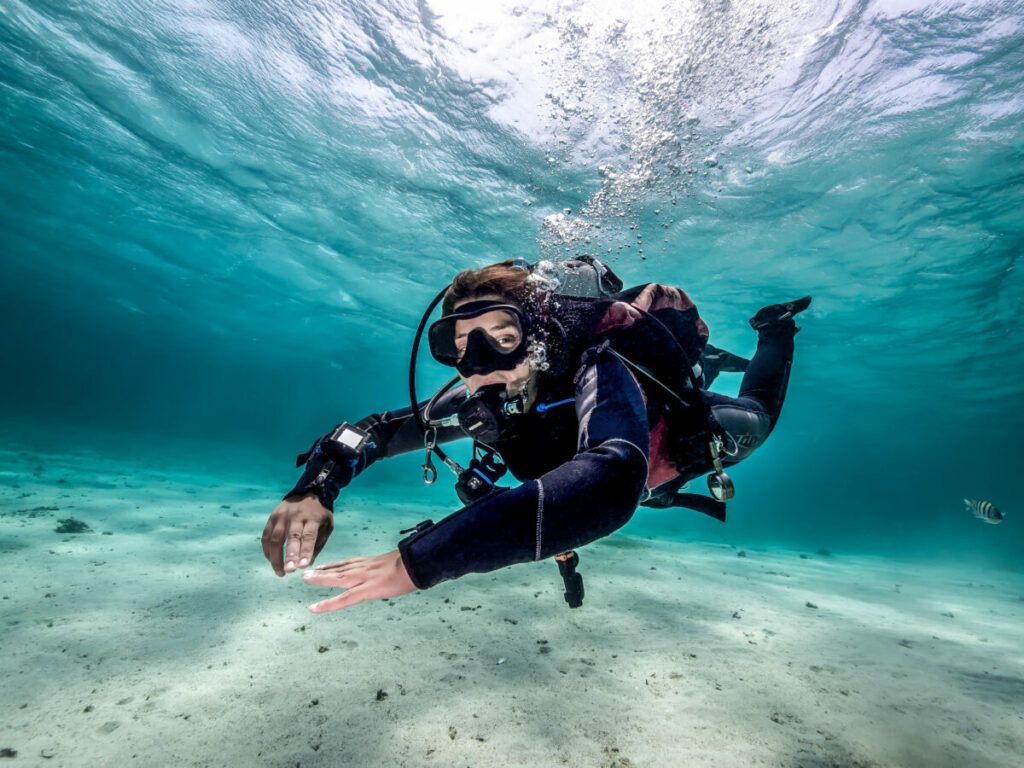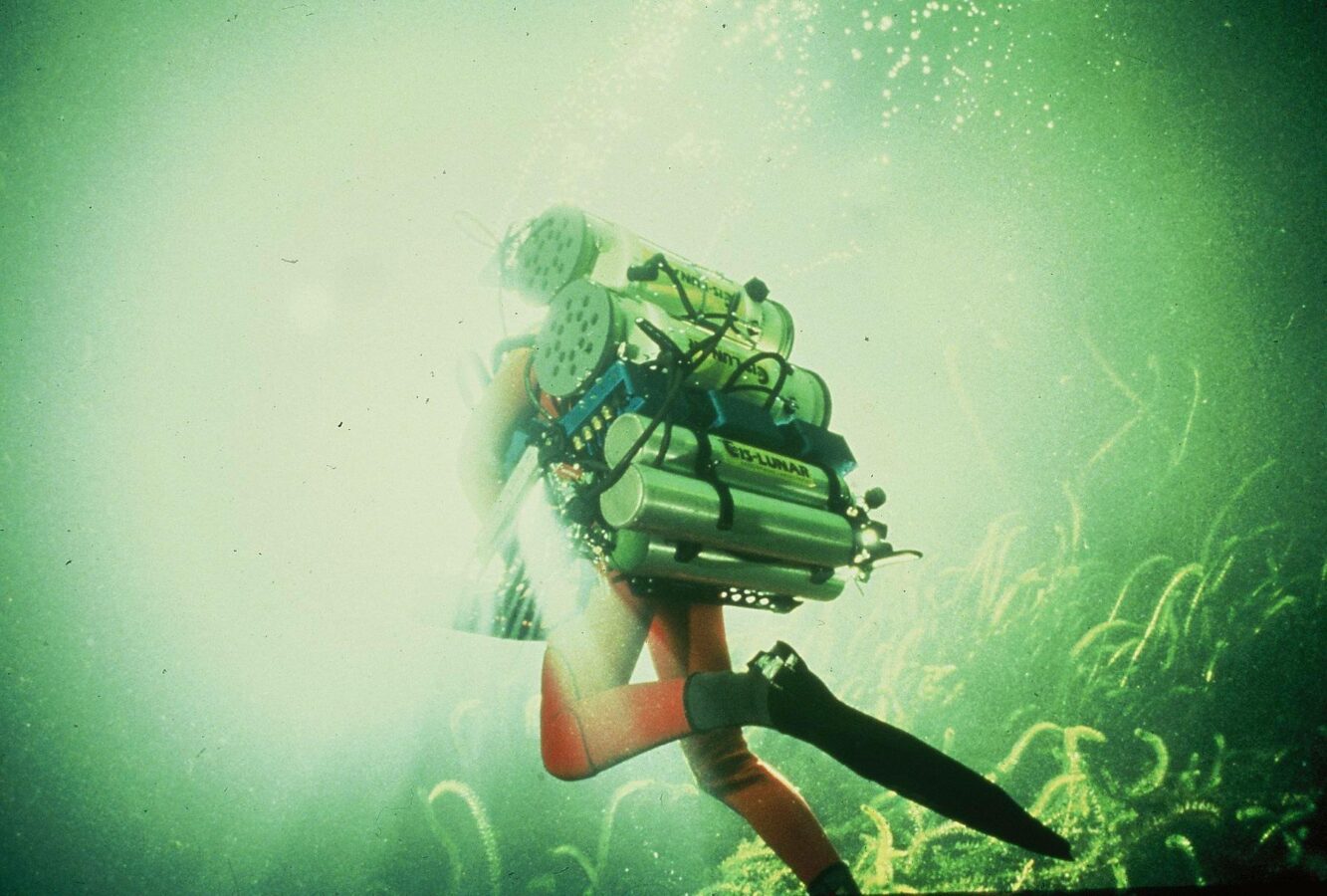What is Nitrox/EANx and do I really need it?
Sooner or later, every diver hears about Nitrox/Enriched Air Nitrox (EAN) and asks themselves: ‘Is Nitrox diving something for me?’ In fact nowadays, you can even start breathing EANx from your very first dive by including a nitrox certification in your Open Water Scuba Diver Course!
But even though the diving world without EANx now seems unimaginable, there is still sometimes confusion about it among novice and even experienced divers.
Keep on reading to find out why you should do your Nitrox Course and why you should dive with it!
What is Nitrox
Nitrox is any gas consisting of Oxygen and Nitrogen and therefore Air is a “Nitrox-Blend” as well. Enriched Air Nitrox means your Nitrox-Blend has a higher Oxygen fraction than Air (but it still only consists of Oxygen and Nitrogen – except trace elements).
So, if we take EAN 32 as an example, we have a breathing gas consisting of 32% of Oxygen and 68% of Nitrogen

Why do your Nitrox Course?
Due to the reduced fraction of Nitrogen (and therefore also its reduced partial pressure), you can either use Nitrox on recreational dives to increase your No-Decompression limit and do longer bottom times or you use it to add an extra safety margin to your dive.
Example 1 Increased No-Decompression limit
The time we can spend underwater with the possibility to go up to the surface without a stop is determined by how much Nitrogen is absorbed in our body. Hence why if we reduce the fraction of Nitrogen, we can spend more time at a certain depth before we reach those limits when compared to air.
The below table compares the NDL (NO decompression limit) from Air to certain EAN mixes.
| Depths in meters | NDL Air | NDL EAN32 | NDL EAN40 |
| 18m | 51min | 75min | 125min |
| 24m | 25min | 35min | 51min |
| 30m | 17min | 20min | 25min |
| 36m | 12min | 17min | – |
| 40m | 9min | – | – |
Table 1: The table compares the NDL (NO decompression limit) from Air to certain Nitrox mixes in min at different depths.
Example 2 Using Nitrox to add a safety margin to your dive
Many people think that Nitrox diving will always make your dive more safe. This is not correct as it only becomes a safer gas if you don’t dive until the limit of your NDL. One way to utilize Nitrox as a safer gas is if you leave your dive computer set on Air while diving on Nitrox so it will give you a more conservative NDL. In this scenario you only need to be aware of the Maximum Operation Depth of your Nitrox mixture and your oxygen intake.
In technical diving high Nitrox blends or even pure oxygen is used during decompression stops on the way up off-gas nitrogen more efficiently….but this is another story.
Are there any drawbacks by doing your Nitrox Course or better, what is dangerous about Nitrox diving?
The one and only drawback of Nitrox (apart from maybe equipment considerations) is that oxygen becomes poisonous for the human body if we are exposed to it at certain pressures and over certain time limits.
to break it down briefly, there are two types of Oxygen Toxicity which can affect a diver. The first is central nervous system O2 toxicity (CNS toxicity) which leads to full body convulsions. The second is pulmonary O2 toxicity where the higher fraction of O2 causes inflammation in your lung/Alveolus. This sounds scary but it is actually quite easy to control as in your Nitrox course you will learn how to do all the relevant Nitrox calculations like the MOD (Maximum Operating Depth) for individual Nitrox gases, and you will also learn what the time exposure limits are for certain oxygen pressures.
If you have the awareness of how deep you can take a mix and how long you could stay on a certain depth (partial pressure of oxygen), the risk of toxicity can be handled quite well!
When can I do my nitrox certification?
Today most agency’s will actually allow you to combine your Nitrox course with your open water diver course so you will be breathing enriched air already on your first dive. If you didn’t take this opportunity, then you can do it as a pure theoretical course right after your open water training.
What can I expect to learn during a Nitrox course?
In most agency’s your first Nitrox course will teach you how to utilize Nitrox mixes up to 40% of Oxygen.
During your course you will learn how to use Nitrox calculations to find out your Maximum Operating Depth depending on its fraction and the best mix and partial pressure of O2 on a given depth by using Dalton’s triangle. We will explain to you how you can track your allowed Oxygen load for a given dive/day and we will discuss the two types of Oxygen toxicity as well and how to deal with them.
The practical part includes an overview of oxygen analyzers and how to use them, some general equipment considerations regarding oxygen, how to mark your tanks and how to correctly log Nitrox mixes.
After your course you will have a good practical and theoretical knowledge of Nitrox so you can enjoy your next diving trip on your new breathing gas!
If you are not already a Nitrox Diver but wish to become one feel free to Contact us!



